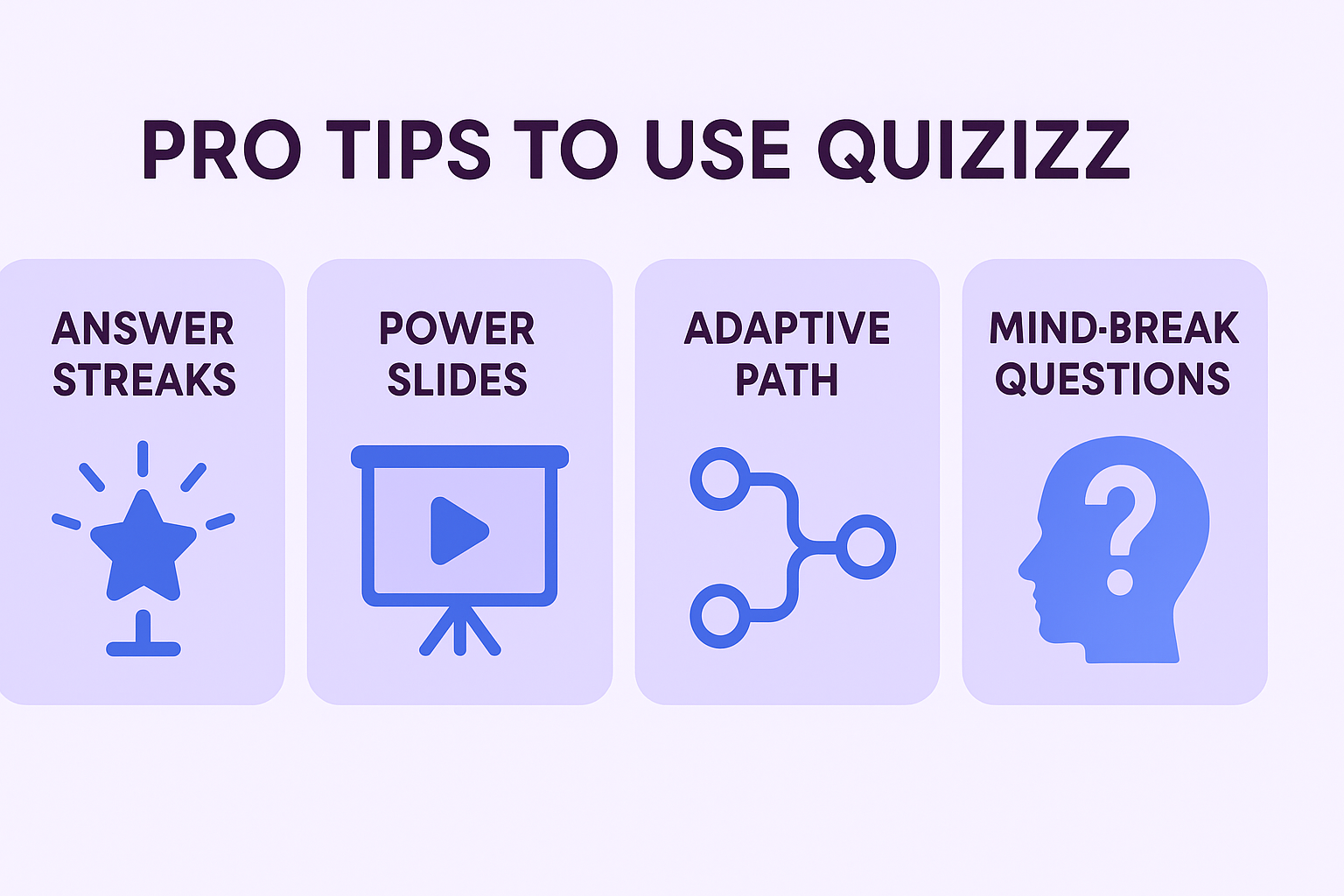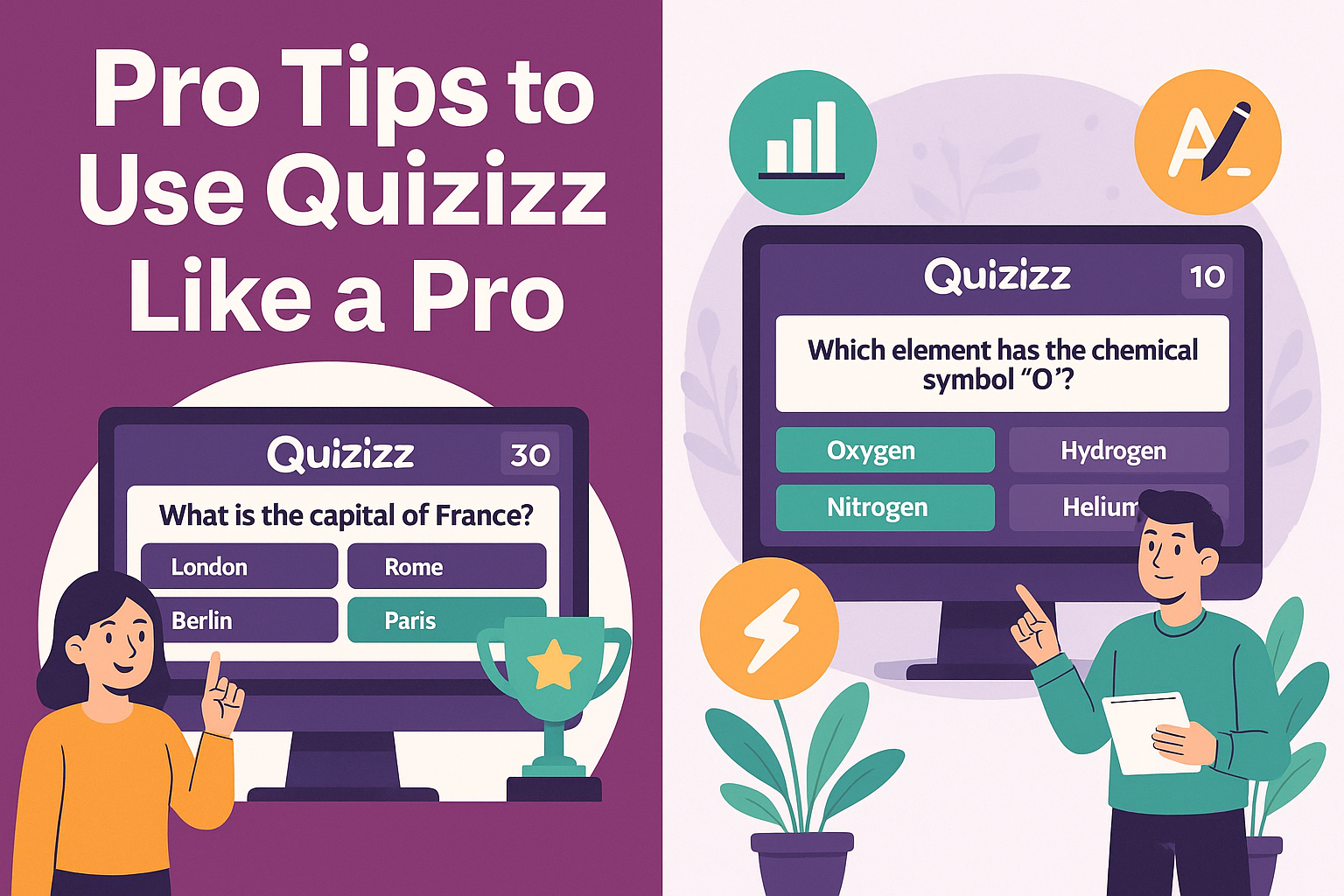If you’ve ever used Quizizz, you already know it’s not just another quiz tool. It’s a whole experience—fun, fast, colorful, competitive, and honestly, quite addictive. But here’s the truth: most people don’t even use 40% of Quizizz’s true power.
That’s exactly why I created this guide—to show you the real pro-level strategies that transform simple quizzes into engaging, high-retention learning sessions.
These are not basic “add images” or “use memes” tips.
These are advanced, practical, classroom-tested, student-approved tactics that you won’t find anywhere else on the internet.
Build “Adaptive Quizzes” Instead of Static Ones
Most teachers create one quiz and expect it to fit all learners. Pro users don’t.
Here’s a trick:
Create 3 versions of the same quiz:
- Beginner
- Intermediate
- Challenge Mode
Then use Quizizz’s Teleport & Assign feature to link them together.
Students who score above a set percentage automatically move to the next level.
This turns a normal quiz into a personalized learning path—and students love the sense of progression.

Use Answer Streak Logic to Build Motivation
Quizizz rewards streaks, but very few creators design their quiz around streak psychology.
Pro strategy:
- Start the quiz with 3–4 easy confidence-boosting questions.
- Place tougher questions after streak rewards, not before.
- Add high-value bonus questions when streaks are likely.
This makes students feel fired up and mentally ready for the harder parts.
Add “Mind-Break Questions” to Reset Attention
Attention naturally drops after 7–9 minutes.
Pro creators sprinkle in short, fun, irrelevant questions like:
- “Pick a random emoji that matches your mood.”
- “Would you rather have super speed or super strength?”
These take 3–5 seconds but reset dopamine levels and massively improve retention.
Use Data Reports Like a Scientist (But Simplified)
Quizizz analytics is a goldmine if you know what to check:
Look at:
- Time spent per question → shows confusion
- Distractor patterns → reveals misconceptions
- Class-wise accuracy trend → helps group students effectively
Pro Tip:
If more than 40% of students select the same wrong answer, turn that incorrect option into your next teaching point.
Create Power Slides Between Questions
A secret most people ignore: Quizizz allows slides inside quizzes.
Professional trick:
- Insert a short slide after every 5–6 questions.
- Use it to review, hint, or reinforce a concept.
Students feel like they’re playing a game, not writing a test.
The quiz becomes half-lesson, half-challenge.
Make Use of “Time Flexibility” the Smart Way
Short timers = pressure
Long timers = boredom
No timer = careless answering
Pro strategy:
- Use short timers for recall questions
- Use medium timers for analytical questions
- Use no timer for creative/open-ended prompts
This makes learners think at the right pace.
Host “Shadow Games” to Train Students Quietly
This is a teacher hack nobody talks about.
Instructions:
- Assign a quiz as homework.
- Host the same quiz the next day in live mode.
- Compare live performance vs homework.
You immediately understand:
- who guessed answers
- who understood
- who needs support
Quiet, effective, powerful.
Use Power-Ups Wisely (Don’t Let Students Sabotage Themselves)
Power-ups are fun, but they can ruin test accuracy.
Pro mode tip:
- Turn ON power-ups during engagement games.
- Turn OFF power-ups during assessment-level quizzes.
This keeps fun and evaluation separate.
Mix MCQs With Creative Responses
In 2025, creativity matters as much as accuracy.
Add:
- open-ended explanations
- audio response questions
- image-labeling tasks
- video-based comprehension questions
Your Quizizz session transforms from a quiz to a mini interactive learning lab.
Build a Quizizz Routine
Students perform better when they know what to expect.
Try this routine:
- 3-minute warm-up quiz
- 10-minute teaching
- 5-minute assessment quiz
- 2-minute reflection slide
This flow feels natural, quick, and extremely effective.
FAQs
Quizizz stands out because it combines classroom-friendly tools with game-like elements—timers, streaks, power-ups, memes, music, and real-time analytics. It keeps learning fun while giving teachers clear, detailed data to track progress.
Absolutely. Teachers can use these strategies to design smarter, more engaging quizzes, while students can use them to study efficiently, track weaknesses, and improve accuracy using adaptive and streak-based techniques.
If you use features like Teleport (importing questions), templates, and slides, you can build an advanced quiz in 10–20 minutes. The key is planning your flow, not spending hours on question creation.
Mind-break questions are short, fun, unrelated questions placed inside quizzes to reset the learner’s attention. They help refresh the mind and boost engagement during long sessions.
Not necessarily. Power-ups are great for engagement and motivation, but they may affect accuracy during tests. Use them for fun sessions, but turn them off for serious assessments.
For maximum engagement:
Short quizzes: 8–12 questions
Medium quizzes: 15–20 questions
Classroom sessions with slides: 20–30 items
Anything above 30 works only if you add mind-breaks or concept slides.
Final Thoughts
Quizizz is more than a quiz website—it’s a dynamic learning engine that can make your classes feel like a game arena. But only when you know how to unlock its pro-level features.
With these unique, insider-style tips, you now have everything you need to use Quizizz:
- smarter
- faster
- more creatively
- and far more effectively than the average user.
